Confused about your draw length? Duncan Busby looks at the different methods you can use to find your optimum size
It seems the one question I am asked more than any other is, ‘How do I find my correct draw length?’ Since it’s especially important for compound archers to get this right, as compound bows are draw-length specific, it’s understandable that you’ll want to avoid making a costly mistake.
However, it’s a surprisingly difficult question to answer as there is no simple formula that can be used to accurately determine your ‘perfect’ draw length, so how do you get this seemingly simple yet crucial part of your shooting form correct?
For any new archer I would suggest the first place to go is a reputable bow shop, where there should be experts on hand who can estimate your approximate draw length and then allow you to try out a few different bows for size. But if you want to work out this measurement yourself, there is a simple calculation you can use. You’ll need to stand with your arms out to your side so you make a T-shape, with your palms facing forward and, without stretching, have someone measure the distance in inches from the tip of your left middle finger, across your back, to the tip of your right middle finger. Now take this figure and divide it by 2.5; this sum will approximate your measured draw length in inches. Since this is a very basic measurement system based on average body proportions, it should give you only a rough estimate of your actual draw length. I have found in some cases that it comes up a little short so, where necessary, I would suggest you round up your measurement to the nearest half inch. I recommend using this method as a starting point only – if you are new to the sport your shooting form will still be developing, so this measurement will most likely change over the next 18 months or so anyway.
Most seasoned archers will be aware that a textbook compound stance suggests your bow arm should be straight but relaxed, the bow string should gently touch the tip of your nose, and run down the corner of your mouth at full draw. If your draw length is correct you shouldn’t need to lean into or away from the string in order to get into this position, but be able to maintain a comfortable upright stance. This technique is easy to repeat as it requires very little muscle control, and since it uses your skeleton to brace the force of the bow it will allow you to shoot for longer without fatigue or deterioration in your form.
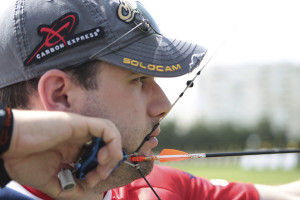
‘Textbook’ compound form suggests your draw should bring the string to the tip of your nose and the corner of your mouth
Any amount of muscle tension during your shot will interfere with how well your bow holds and how easily you can activate your release, so getting the right draw length is crucial to avoid this.
I find that by basing my draw length on how well my bow holds I can achieve a more accurate measurement, so what should you be looking out for when using this method?
If you find your sight is constantly floating around the target without settling, your draw length may be a little too long. Don’t mistake this for a normal aiming pattern, instead the movement is much larger and at times may feel very hard to control. To correct this I would suggest shortening your draw length in increments of 1/8 of an inch until you see an improvement; remember that you don’t need to make large adjustments to feel a difference, just one or two twists in or out of your string or cable can have a huge effect.
However, if your sight settles quickly but makes large, unpredictable movements before re-settling again, your draw length may be a little too short; you’re more likely to see this pattern when pulling hard against the bow stops. Try adding 1/8” to your draw length at a time to correct this problem. If you are having trouble identifying your bow’s holding pattern you can analyse the grouping pattern of your arrows instead. Since there are many other factors which can affect your grouping at the target, such as tuning issues and the weather, this method is considered less reliable but, used cautiously, it can still be a helpful tool in determining your optimum draw length.
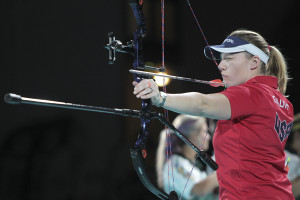
If your sight pin makes large, unpredictable movements before it settles, your draw length may be too short
If you find that your groups are fairly uniform in shape but a little more open than you would expect, especially at longer distances, then your draw may be a little over-extended. You may also find that you continually miss out to the left (for a right-handed archer) or the right (for a left-hander), so try shortening your draw length a little to see if this helps.
By contrast, if you find you have fairly tight groups with an occasional wide arrow, especially at shorter distances, then you may be under-drawing, so try lengthening your draw instead.
Alternatively, you can judge the accuracy of your draw length by how easy you find it to execute your release. If you find that you have problems pulling through the shot at longer distances, but have no issues at closer targets, then you may be a little over-drawn. Conversely, if you find you have little control at shorter distances but have no problems further away, then you may be under-drawn.
Your shots should flow easily at every distance and feel effortless; a correct draw length will ensure you have proper bone alignment and will inhibit any muscle tension. This will ensure that you have greater control over your release, and will ultimately be reflected in your results. But keep in mind that these methods are only accurate once you have excluded any problems with your equipment.
Though most archers will find their draw length varies slightly over time and according to the disciplines they shoot – it’s certainly not unusual to see top international archers alter their draw lengths a small amount during competitions in order to get a better aim or more consistent shot – I would suggest that once you have found the length that works best for you, try to stick to it, since altering it too often can cause inconsistencies to develop in your form.
Finding the correct draw length is an important step in getting a consistent, repeatable shot; some archers have no trouble finding their most comfortable length and won’t ever feel the need to change it, whereas others can find it a constant battle.
It’s important to find a shooting position which is comfortable for you and allows you to execute strong, controlled shots, but if you are having trouble finding it you should always seek professional assistance, whether this is from a coach or a reputable bow shop, since shooting with the wrong draw-length can not only impact your results but your physical state too.


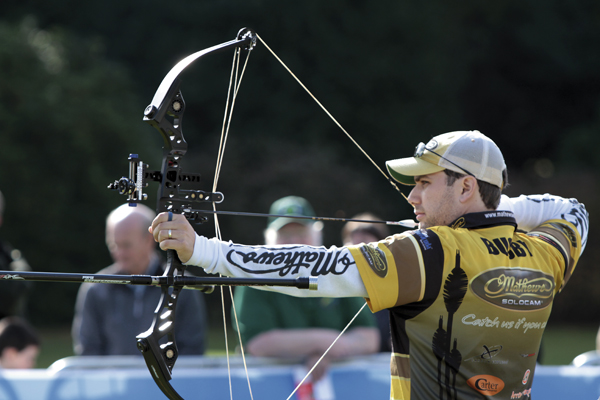
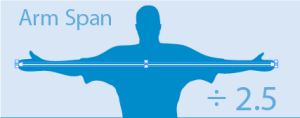
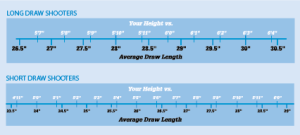
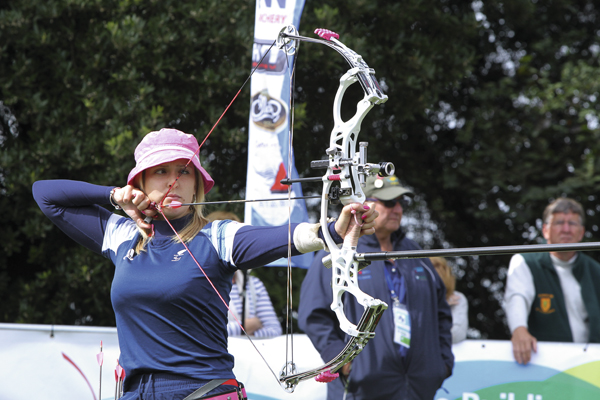
Good info.